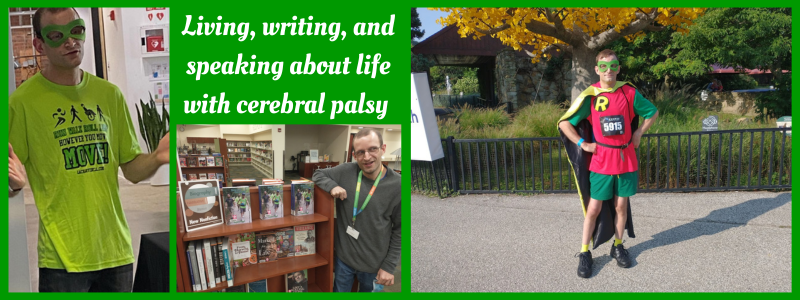This review for Disability Visibility First-Person Stories from the Twenty-First Century contains Amazon affiliate links. As an Amazon affiliate I earn commissions from qualifying purchases.
Shocking, emotional, and relatable all describe Disability Visibility First-Person Stories from the Twenty-First Century. An anthology giving a multifaceted look into the disabled experience, Disability Visibility provides representation for the disability community in a much-needed way. Focusing on diversity.
Editor Alice Wong accomplishes the diverse outlook through different means. Wong brings smaller subsections of the disability community together by collecting insights from individuals with various diagnoses. Cerebral palsy (CP), fibromyalgia, and Crouzon syndrome to name a few. Making the book appealing to readers in these varied disability subgroups.
Furthermore, Wong achieves her diversity focus by using Disability Visibility as a platform to give a voice to underrepresented populations within the disability community. As Wong explains in her introduction, “I wanted to increase the diversity of the mainstream representation of disability, which remains very white and very male.”
Now if you are a white male like me, temptation to grow defensive might emerge. “But…” you start to defend yourself. Please stop. Take a deep breath. Understand the need for greater diversity in disability representation is not a personal slight against you. Then with an open-mind resume reading. What you read might shock you.
Shocking
Perhaps, I should pause a minute. Clarify the “shock” I am referencing will not suddenly sneak up on you. Wong does an excellent job throughout Disability Visibility incorporating “content notes.” Warning readers the following selection contains sexual assault, suicidal ideation, language deprivation, and/or other sensitive subjects. Essentially preparing the reader for what to expect.
Yet, even with such advanced notice, the shock lingers. For me, the language deprivation Jeremy Wood writes about in his entry “The Isolation of Being Deaf in Prison” stayed with me. Previously, I never gave a single thought to accessibility and prison. After reading Wood’s contribution to Disability Visibility, I wonder what other disability issues I am overlooking.
Or, what issues I am not spotlighting enough. Mari Ramsawakh grabbed my attention with her piece “Incontinence Is a Public Health Issue.” Even though I am aware some people with cerebral palsy also deal with incontinence, I do not think I ever had a conversation about the subject. In fact, I almost wrote this review without mentioning Ramsawakh’s entry. Yet her emphasis on the importance behind discussing incontinence issues caused me to re-evaluate. Demonstrating how Disability Visibility offers an impactful read. Such impact only remains possible because the read packs an emotional punch.
Emotional
Regarding Ramsawakh’s contribution, I felt guilt. Here I am, “The CP Vigilante.” Nevertheless, as I stated above, I do not think I have ever had a conversation about incontinence. Although I personally do not deal with the issue, others in the cerebral palsy community do. By mentioning Ramsawakh’s selection, I hope to encourage more discussion about incontinence.
However, you do not need an ambitious desire to spark dialogue to find yourself responding emotionally to Disability Visibility. A simple respect for others’ humanity will move you. Already, I referenced Wood’s contribution “The Isolation of Being Deaf in Prison.” His selection stayed with me because how horrified I felt for him as he recounted his prison experiences.
To name another example, I found myself growing angry while reading Sandy Ho’s contribution “Canfei to Canji.” The selection discusses the Chinese symbols used over the years to refer to people with disabilities. Canfei meaning useless. Useless! Imagine how you would feel if someone called you that! Grrr.
Okay, okay. My turn to stop and take a deep breath. Especially since beyond the negative emotions Disability Visibility sparks, comes much positive.
Relatable
Earlier I touched upon one such positive, noting Wong brings smaller subsections of the disability community together by collecting insights from individuals with various diagnoses. Essentially gathering readers from assorted areas that makeup the larger disability community. By doing this Disability Visibility becomes a tool to unify the disability community as one. Unification accomplished through learning to relate to each other’s experiences.
For example, Ariel Henley’s selection “There’s a Mathematical Equation That Proves I’m Ugly” stood out to me. In her piece Henley shared “I used to cry at the sight of a picture of myself.” Tears triggered by the facial disfigurement she has due to Crouzon syndrome.
While not to the same intensity, I still related to Henley. Cerebral palsy causes me to walk with an unwieldy gait. Watching myself move on camera or catching my reflection in the window as I move can feel jarring. Tempting me to feel awkward. Henley’s diagnosis and my diagnosis differ, but we possess common ground.
Honestly, I could go on. Citing more examples to illustrate relatability between cerebral palsy and the broader disability community. However, I do not want to keep you longer than needed. So, allow me to wrap up.
Disability Visibility In Summary
To conclude my Disability Visibility book review, I will refrain from making any blanket statements. No “you should” or “you should not” read the book. Rather, I suggest you look inward. From reading my review, what do your instincts tell you? Are you ready for a shocking and emotional read? One that will enable you to better relate to the broader disability community.
By chance you already read Disability Visibility, please share your thoughts via a comment below.
Until next time, remember. Do not blend in. Blend out!
-Zachary




